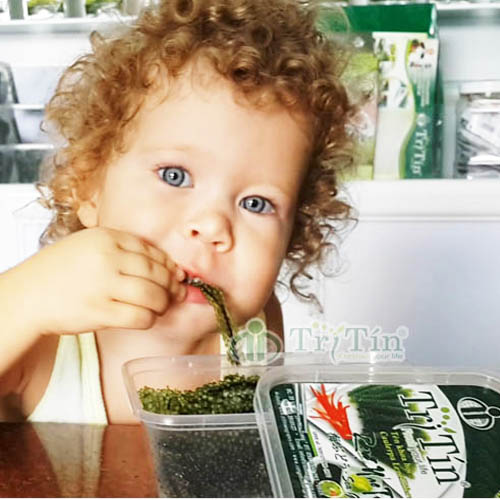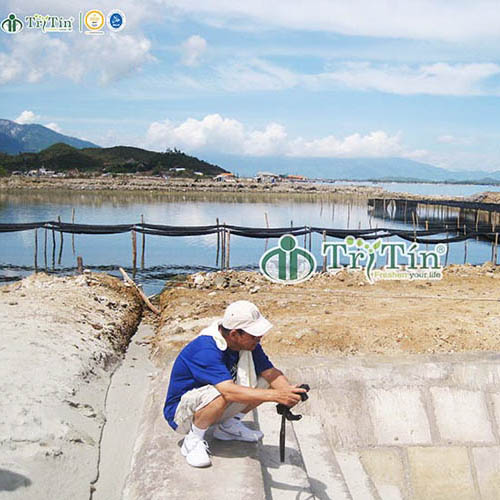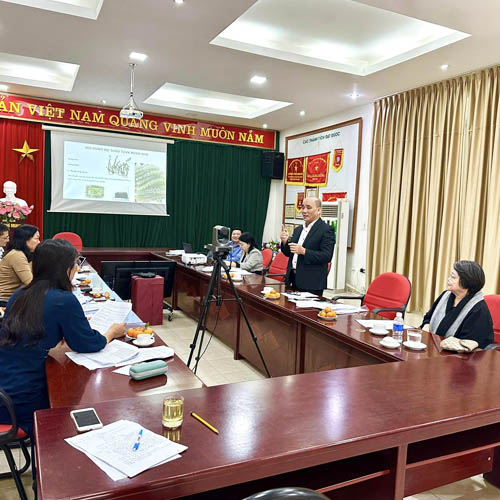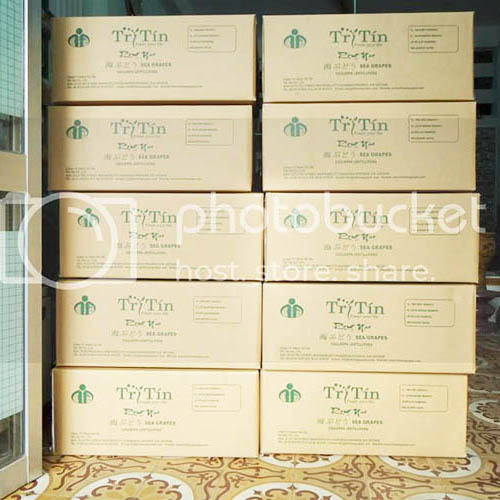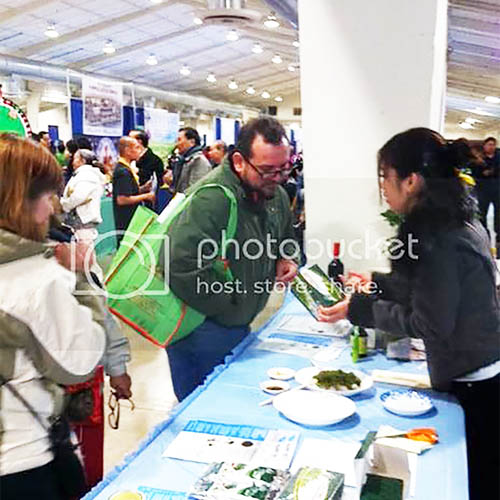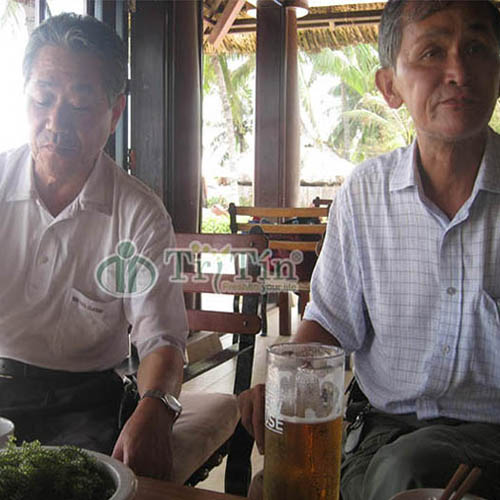information
- Home / News/ information
Engineer Le Ben with Japanese seaweed
Sea grapes originated from the Philippines, then were introduced to Japan and were grown and processed into food by the Japanese as a green vegetable since 1986. However, in the land of the rising sun, sea grapes did not grow well. In 2004, this seaweed was brought back by a Vietnamese geological engineer to study, improve the planting method and successfully propagate, creating a higher quality sea grape product. That engineer was Mr. Le Ben - Member of the Khanh Hoa Science and Technology Association, Deputy Director of Tri Tin Company Limited (Nha Trang). The above innovation helped him win an encouragement prize in the 9th National Science and Technology Innovation Contest (2006 - 2007), at the same time opening up new prospects for sea grape cultivation in Vietnam.
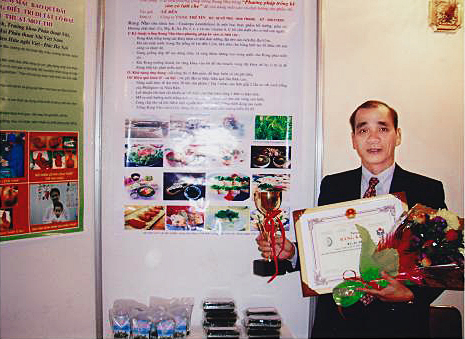
Ideas from the dining table
After a long, winding road along the shrimp ponds of the people of Ninh Hai commune (Ninh Hoa), we arrived at Dong Ha village - where Mr. Le Ben grows seaweed. Here, we witnessed the lush growth of seaweed brought from Japan, which is very rare in the sea of Vietnam. While checking the quality of the newly harvested seaweed, Mr. Ben told us the story of how he got involved in growing seaweed.
In 2004, when Mr. Ben was still in the granite business, during an intimate meal, his Japanese partners happened to mention a nutritious fresh seaweed dish, very popular with Japanese diners, that they could not find on the menu at restaurants in Vietnam. Thinking of the abandoned ponds due to previous failures in lobster farming, Mr. Ben came up with the idea of bringing Japanese seaweed back to grow. So, from 200 grams of seaweed seeds that Mr. Ben asked his partners to bring from Japan, he propagated them in mirror tanks according to the instructions. When he had the necessary seed source, he started to plant the seeds in abandoned shrimp ponds. However, due to his lack of experience, the work was not smooth at first, which sometimes made him feel discouraged. Just a few days after being released into the pond, the few sea grape seedlings just “disappeared”, almost all of them were lost. After many nights of searching with a flashlight, he found the cause: the seedlings had been eaten by fish and some marine animals. At this point, his idea of developing sea grape seedlings was almost ruined.
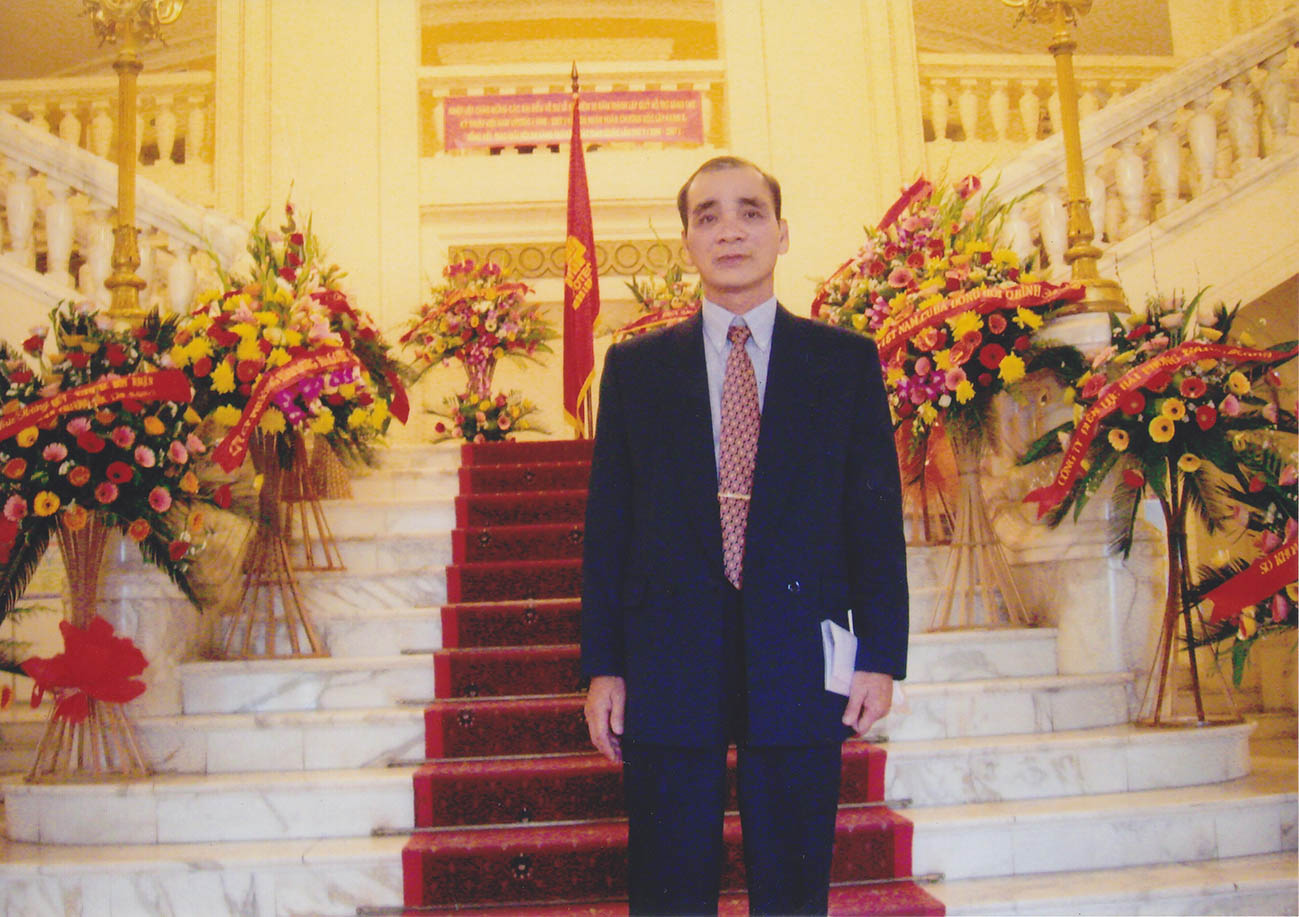
Find new planting methods
Despite many difficulties, Mr. Ben was not discouraged. To avoid the “attack” of marine animals, he came up with a method of planting in isolation in net cages. Although this method minimizes loss, the cost is high, so if he continues to maintain the method of planting in isolation, the business will not be effective. Therefore, Mr. Ben always had the intention of finding a new method of growing seaweed. In Japan, seaweed is grown using two basic methods: Bottom planting (seaweed is planted directly on the seabed or the bottom of a pond) and hanging planting (seaweed is placed in mesh bags, suspended in seawater). In addition, in some places, seaweed is grown in tanks and lakes made of cement (seaweed is released into tanks containing seawater). But all of the above methods have limitations. If planted on the bottom, the seaweed is easily dirty due to being trampled during harvesting. When planted hanging, the seaweed does not directly take nutrients from the seabed so it grows slowly. If planted in a tank, the cost is too high.
Drawing on experience from overseas seaweed growing methods, based on Vietnam’s climate conditions, Mr. Ben has found a new method of growing seaweed. That is the method of growing on a covered floor with a net. According to this method, seaweed is grown in plastic trays, lined with nylon containing nutritious humus. Then, the seed trays are placed on shelves, stalls made of bamboo, wood, or stacked with bricks and stones, lying submerged at the bottom of the pond; using orchid nets to create a mobile roof to actively regulate the light and temperature of the seawater; combined with a paddle wheel to create flow, increasing the amount of oxygen. Thanks to this, the seaweed has the conditions to absorb nutrients in the tray, without mixing with impurities from the bottom of the pond, at the same time the mobile cover net has the effect of overcoming the hot climate in Vietnam. On the other hand, with this method, harvesting seaweed is more convenient, the investment cost is low, so the product is highly competitive.
In particular, after testing seaweed samples using the new growing method, the authorities concluded that seaweed grown in Vietnam meets food hygiene and safety standards and is rich in nutrients. From the results obtained, Mr. Ben's scientific research project "Improving seaweed growing methods for high productivity and good quality" won an encouragement prize at the 9th National Science and Technology Innovation Contest (2006 - 2007). However, Mr. Ben said that the Japanese are strict in product standards, especially food, so the above facilities are still not enough to convince Japanese partners when he offers his products. Therefore, to verify, the partners directly brought the product back to Japan and tested it again. However, with the sample brought back along with the test results, the Japanese still did not believe that the seaweed grown in Vietnam could be many times better than the seaweed grown in Japan. The Japanese partners also sent experts to the site to directly supervise the entire farming and processing process. Only then were the results recognized. “In my opinion, in Vietnam there is a very good method of growing seaweed. After 20 days of planting, the seaweed reaches a length of about 10 to more than 20cm; in Okinawa (Japan), the length of the seaweed is only about 6 - 7cm. Moreover, the investment cost in Vietnam is low but the product yield is high; in Japan, it is the opposite. Although the quality of seaweed products in Japan is clean, the length of the seaweed stems is short, the seaweed fruits are small, the color is pale and the taste is not delicious; while the seaweed in Vietnam has long stems, large fruits, more beautiful color and better taste" - commented Mr. Yamacuchi, a Japanese engineer who supervises the process of cultivating and processing seaweed at Mr. Ben's seaweed growing facility. From this result, the export route of sea grapes to the Japanese market began to expand. However, before exporting to this demanding market, sea grapes must be processed very carefully and elaborately. After harvesting, sea grapes are picked into small pieces of about 6 - 7cm, put into a water tank to filter out dirt. Then, put it in a centrifuge to drain the water and select the quality strands for packaging. There are 2 types of finished seaweed: fresh seaweed (use time from 7-10 days) and salted seaweed (use time from 6-12 months). In addition to its function as food, seaweed can also be used as a skin care mask. This product is currently available at Tri Tin Company Limited (35 Vo Tru, Nha Trang).
According to engineer Le Ben, seaweed grown in Vietnam has an average yield of 30 tons/ha/year, twice that of seaweed grown in Japan, but the cost is 10 times lower, the selling price of the product is high (from 8 - 10 USD/kg of fresh seaweed). Sea grapes are also very easy to grow, from planting to harvesting only 15 - 20 days. Farmers only need to learn basic knowledge to be able to grow them. On the other hand, sea grapes are also very suitable for the natural conditions in Vietnam's coastal areas. Therefore, developing a model of growing sea grapes in island areas lacking fresh water and green vegetables such as Hoang Sa and Truong Sa is necessary.
Hopefully, the initial achievements in the research and cultivation of sea grapes by engineer Ben will be the premise for the development of sea grape cultivation in Vietnam in the future. And from here, the Vietnamese menu will have more delicious and nutritious dishes made from sea grapes "made in Vietnam".
Khanh Hoa Newspaper.
Copyright © 2020 Copyright by TRI TIN CO., LTD




